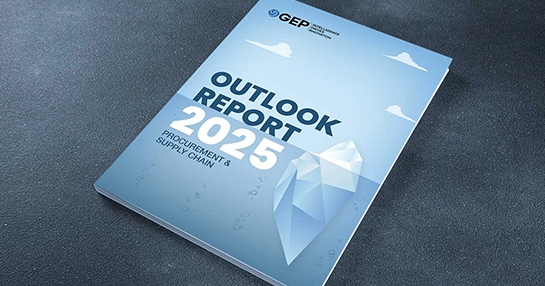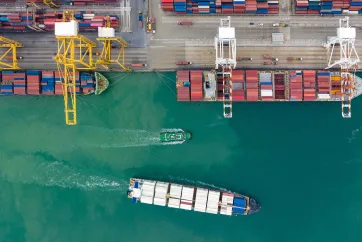
From iPhones to Fertilizers: How U.S. Tariffs Are Rewiring Global Supply Chains
- U.S. tariffs on steel, aluminum and many other imports are reshaping supply chains and raising production expenses.
- Global manufacturers have adjusting operations, rerouting exports, and managing rising input prices.
- Companies have responded by shifting sourcing, expanding locally, and revising trade agreements.
April 21, 2025 | Supply Chain
In a world defined by interdependence, the reimposition of steep U.S. tariffs on steel and aluminum signals a return to old-world protectionism with new-world consequences.
In March, U.S. President Donald Trump reinstated a 25% tariff on these critical metals—a decision that reverberates far beyond the foundries of Pennsylvania or the ports of Louisiana.
The policy affects over $61 billion in trade and reflects a broader shift in U.S. industrial strategy: one that trades short-term price stability for long-term autonomy.
But as companies scramble to rewire supply chains and mitigate rising input costs, the ripple effects are shaking industries from automotive and agriculture to apparel and electronics.
The Trade Gap: An Imbalanced Equation
The U.S. continues to run significant trade deficits in metals—$14 billion for steel and $13 billion for aluminum.
Canada, the top exporter of both to the U.S., shipped an estimated $19.5 billion worth in 2024, according to S&P Global.
Meanwhile, Mexico has become the primary destination for U.S. steel and aluminum exports, accounting for 36% and 29%, respectively - resulting in one of the few bilateral surpluses in this segment.
Aluminum: Price Surges and the Squeeze on Manufacturing
Following the March 12 tariff announcement, aluminum prices in the U.S. have soared. The Midwest duty-paid premium reached 45 cents per pound (or over $990/metric ton), marking a 70% increase since January 2025. For small and mid-sized manufacturers, this is a fiscal vice: costs are climbing while supply chain shifts remain sluggish and expensive.
Supply Chain Shifts
• Canada, once supplying 93% of U.S. primary aluminum, is now redirecting output to Europe. Alcoa plans to reroute Canadian supply to Europe and redirect Australian aluminum to the U.S.
• U.S. buyers are eyeing India and the Middle East—regions accounting for 37% of non-China aluminum production—but face shipping and capacity constraints.
Also Read: 5 Key Supply Chains Strategies to Navigate Tariffs
Steel: Rising Prices and a Global Realignment
Steel markets have responded with equal turbulence. Hot-rolled coil prices are up 34% since January, while steel plate prices have climbed 38%, driven by constricted supply and speculative buying. Major exporters—including China, Japan, and South Korea—shipped $1.1 billion worth of steel fasteners to the U.S. in 2024. Now, many are pivoting exports to Asia and Europe, raising concerns over regional gluts and looming price wars.
Emerging Strategies
• Aperam, a European steelmaker, is working with U.S. customers to secure exemptions.
• In Asia-Pacific, China is funneling excess inventory into Southeast Asian markets, intensifying competition and squeezing smaller producers.
Retaliatory Measures from Trading Partners
In response to the U.S. tariffs, several countries have implemented countermeasures:
European Union:
The EU has imposed retaliatory tariffs on approximately €21 billion worth of U.S. products, including maize, wheat, motorcycles, and clothing.
China:
China announced an 84% tariff on U.S. imports, targeting $23 billion worth of goods such as soybeans, diamonds, and poultry. This action is in direct retaliation to the U.S. tariffs and has escalated tensions between the two economic giants.
Beyond Metals: The Domino Effect Across Sectors
Textiles: Tariffs and Tight Margins
Retailers and apparel manufacturers are navigating a storm. Brands like Lululemon have flagged upcoming price hikes, with many firms accelerating sourcing shifts to India and Bangladesh, where U.S. tariffs are relatively lower at 26% and 37%, respectively. India alone exported $21.3 billion in textiles in early FY2025, a figure poised to rise.
Agriculture: The Fertilizer Fallout
Tariffs have quietly hit American farmers, especially with a 10% duty on Canadian potash—a key fertilizer component. Groups like The Fertilizer Institute are lobbying for relief, warning of declining global competitiveness if retaliatory tariffs emerge.
Automotive: Rethinking Assembly Lines
Tariffs could add $3,000 to $10,000 per vehicle, prompting foreign automakers to expedite U.S. investments:
- Hyundai plans to invest $21 billion, including a $5.8B steel plant in Louisiana.
- Honda is shifting Civic hybrid production from Mexico to Indiana.
- Nissan and GM are exploring relocation of truck and EV production to tariff-free zones.
Survival Strategies in a Protectionist Age
1. Diversifying Production Footprints
- Agilian Technology is building a new factory in Malaysia to hedge against China-centric risks.
- The "China +1" or even "China +2" strategy is rising in prominence, particularly in sectors like chemicals and electronics.
2. Flexible Contracts and Supplier Leverage
- U.S. buyers are demanding tariff-adjusted contracts, longer payment cycles, and upfront discounts.
- Walmart, for instance, has pushed Chinese suppliers for up to 10% reductions.
3. Reshoring and Nearshoring
- Pharma giants Pfizer, Johnson & Johnson, and Eli Lilly are investing $80+ billion to boost domestic production.
- Apple plans to manufacture 25 million iPhones in India in 2025—nearly half of U.S. demand.
- Samsung and LG are eyeing U.S. states like South Carolina for appliance manufacturing.
Rethinking Resilience in a Fragmented Trade Era
The reimposition of U.S. tariffs on steel and aluminum has become a stress test for the global economy. From raw materials to finished goods, the ripple effects are redefining how industries operate, invest, and compete. As input costs rise and trade flows realign, both exporters and domestic buyers are navigating an increasingly volatile landscape.
Some companies are responding with agility—diversifying production, reshoring operations, and rewriting supplier contracts. Yet for small and mid-sized players, the road ahead is far less certain.
What’s emerging is not merely a short-term adjustment, but a structural transformation. In this new era of protectionism, global industries are being forced to confront hard questions about resilience, supply chain sovereignty, and the true cost of interdependence.
Visit GEP Tariff Management Resource Center for insights, strategies and the latest updates.
Author: Jaydip Katkar



